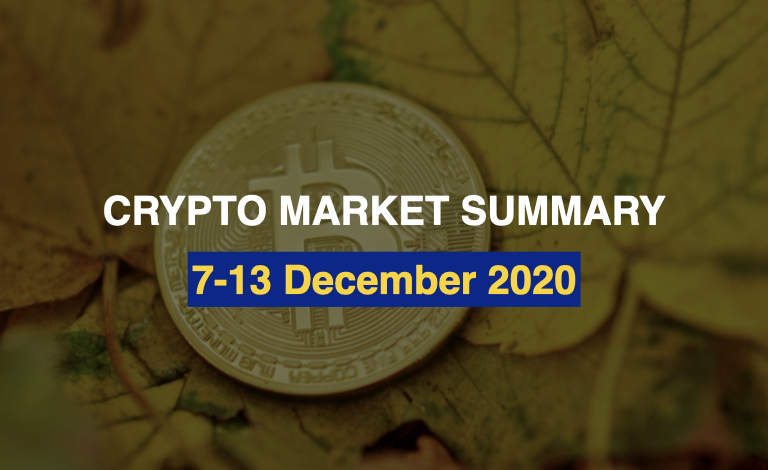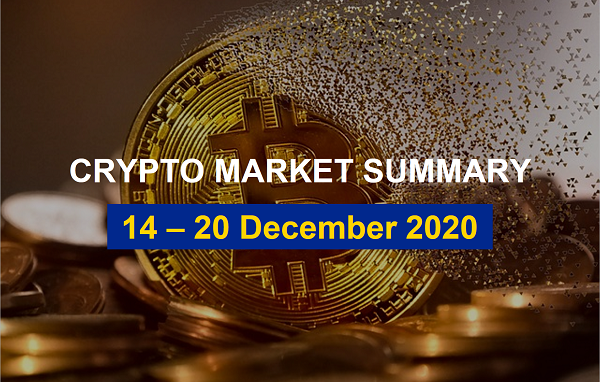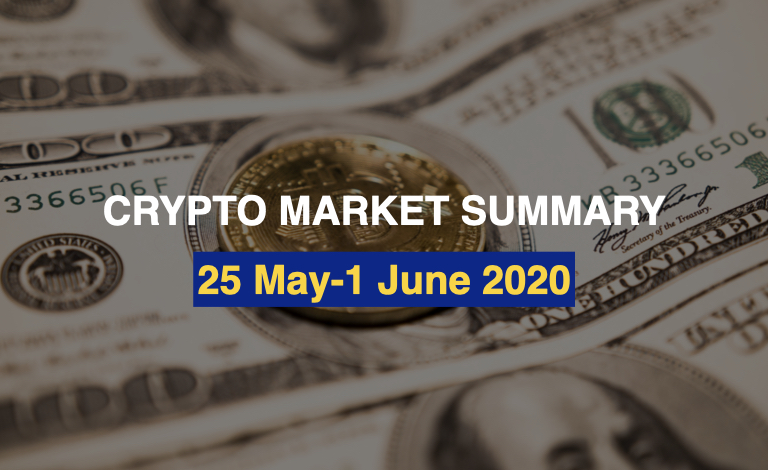
- The 2017 rally in Bitcoin and other cryptocurrencies was driven primarily by retail investors
- Recent rally in Bitcoin and other cryptocurrencies likely to be buoyed by institutional investors who now have more access to Bitcoin via regulated routes
While the rally in Bitcoin and cryptocurrencies in 2017 was largely led by retail investors, there are increasing signs that the financial industry may be playing more of a role in the latest surge.
Unlike three years ago, there are now more regulated and licensed cryptocurrency exchanges than ever before.
Regulated Bitcoin funds, like Grayscale Investments and a more liquid regulated futures market give the likes of quant funds, asset managers and family offices more options than ever to invest in Bitcoin, few of which existed until relatively recently.
Cryptocurrency custodians also provide the security and assurance that institutional investors are more familiar and comfortable with.
With Bitcoin just shy of US$20,000 this month, proponents are suggesting that it is muscling in on gold’s role as a portfolio diversifier, against a backdrop of loose monetary policy and fiscal stimulus to counter the economic fallout of the pandemic.
Critics of cryptocurrency are less sanguine about the prospects of Bitcoin and its ilk, with detractors suggesting that it is nothing more than a purely speculative tool, anticipating a bust like the one three years ago.
If so, then the recent inflows into Grayscale Bitcoin Trust, a key gateway for institutional investors into the realm of cryptocurrencies, does not seem to suggest it.
The trust’s exponential growth suggests that longer-term investors like asset managers and family offices have been playing a bigger role in recent weeks, with Grayscale Investments assets soaring to over US$10 billion from US$2 billion a year ago.
In the last quarter alone, Grayscale Investments saw almost US$720 million of inflows, and an investment report suggests that hedge funds accounted for over 80% of those flows.
Last month, Guggenheim Partners, a fund manager, reserved the right for its US$5.3 billion Macro Opportunities Fund to invest in Grayscale Investments trust products.
And over the summer, Fidelity Investments launched a passively managed Bitcoin fund, aimed at accredited investors only, with purchases through family offices, registered investment advisors or other financial institutions.
Strategists have also expanded or initiated coverage of Bitcoin and cryptocurrencies, sensing greater demand for analysis from the financial industry.
But cryptocurrencies still remain a relatively niche segment of the investment market, albeit a high-profile niche.
With approximately US$52 trillion of funds managed by institutional investors, the US$580 billion market cap for cryptocurrencies is a drop in an ocean of assets, but also suggests that there is still plenty of room for growth.
Money managers, regardless of their personal misgivings about cryptocurrencies, may still want to prepare a well-rehearsed response when their clients inevitably ask them why they haven’t considered cryptocurrencies.
The FOMO is real.
—
Holiday cheer is in the air, as investors are increasingly optimistic over a fresh round of fiscal stimulus out of Washington.
Meanwhile in Asia, China is stockpiling industrial metals, in anticipation of a sharp uptick in manufacturing activity and driving their prices skywards even as the lame duck Trump administration prepares to sanction more Chinese officials over their role in Hong Kong.
In Asia, markets started the week a mixed bag with Tokyo’s Nikkei 225 (+0.01%) and Sydney’s ASX 200 (+0.68%) up while Seoul’s KOSPI (-0.09%), was slightly lower and Hong Kong’s Hang Seng Index (-1.77%) down sharply on the prospect of U.S. sanctions of Chinese officials over the territory.
Metallic Measures of an Economic Recovery
- Industrial metal prices are surging at a time when supply has come under pressure and amidst rising manufacturing activity
- Dollar declines, record-setting stocks and low bond yields are contributing to improved prospects for both industrial metals as well as their producers
To get a better indication of whether the global economy is truly in recovery or not, the stock market, viewed in isolation, is often a poor gauge.
Instead, investors may be better off looking at the vast amounts of molten zinc being poured out into ingots and rolling off the production line at foundries across the United States and other parts of the world.
As the stock market has increasingly gotten frothy, investors are casting their nets wider and wagering on industrial metals like copper and nickel, betting that coronavirus vaccines and stimulus programs will drive a resurgence in manufacturing activity.
Prices for copper have risen to their highest level in almost eight years while iron ore, a main ingredient of steel, is one of the best-performing assets of 2020.
Aluminum and zinc have added about 15% since the end of September and are up over 40% since mid-May.
Part of the reason for the ascent of metals has also been a decrease in supply.
As the coronavirus pandemic came to bear, copper mines in South Africa were forced to shutter as they had to send workers home, while those that operated in places like Peru and Chile had to operate at diminished capacity.
Labor strikes at mines in Peru have not been helping either.
As the building blocks of everything from houses to electric cars, industrial metal prices are especially sensitive to manufacturing activity from China, as the country accounts for about half of global demand for copper and other materials.
The faster-than-expected recovery in the Middle Kingdom has sparked a reversal in prices of metals, which languished in recent years amidst trade tensions between the U.S. and China, even before the pandemic lockdowns dented demand.
But whether industrial metal prices are indicative of a return of economic activity is less clear.
The recent record rally in stocks and with bond yields still near all-time lows, has seen some money spillover into raw materials.
And a declining dollar, which recently hit its lowest levels in two years, has also provided a boost for industrial metals, which are priced in the greenback.
To be sure, factory activity in both the U.S. and China is accelerating, at a time when metals producers are at lower capacities.
And that is driving a rebound for the stocks of large metals producers that earlier this year suffered big drops in revenue and were forced to cut spending, including Freeport-McMoRan (+2.75%), the largest copper miner in the U.S. and Century Aluminum (+7.60%).
That shift in fortunes has allowed these firms to pay down debt, reinstate and increase dividends to shareholders, while investing in new mines.
Soaring purchases of bicycles and air conditioners as lockdowns kept people away from malls and to pursue more outdoor activities, has also seen a surge in demand for metals.
Tens of millions of dollars have also flowed into exchange traded funds that track metal producers, including Global X Copper Miners ETF, according to data from FactSet.
A lack of investment in new mining projects may also be constricting metal supply just as demand is set to soar.
The shift to renewable energy should also be a boon for traders and large producers like Glencore (+4.40%) as large amounts of copper and other metals are needed for electric car charging stations and wind turbines.
This holiday season, even tinsel may just get a little more pricey.
Stimulus on The Way
- Slowing U.S. economic recovery and higher unemployment is putting pressure on politicians in Washington to provide fresh fiscal stimulus
- Stimulus checks will provide a momentary boost for markets as well as for retailers during the holiday season
It’s beginning to look a lot like Christmas. Everywhere you roam, take a look at the empty stores, with all their empty floors, because the coronavirus has us all locked home (sung to the tune of Meredith Wilson’s 1951 song “It’s Beginning to Look a Lot Like Christmas”).
Yet in Washington, it really is beginning to look a lot like Christmas as a bipartisan group of U.S. senators will unveil legislation as soon as later today, for additional fiscal stimulus worth about US$908 billion.
Remember that one Christmas where all you wanted was a brand-new G.I Joe and your parents got you G.I. Jim instead at the dollar store?
After four months of political wrangling, the half-baked stimulus package proposal from the bipartisan group of U.S. senators satisfies no one, and irritates everyone.
And for now it’s unclear if Republican Senate majority leader Mitch McConnell would even permit the proposed fiscal stimulus to go forward for a vote.
The bipartisan proposal includes US$288 billion in small business aid, US$180 billion in unemployment benefits that would boost weekly payouts by US$300 and US$160 billion for cash-strapped state and local governments.
US$17 billion would also be earmarked for the embattled airline industry.
With as many as 12 million Americans set to lose their unemployment insurance by the end of this month, time is running out on a fresh set of fiscal stimulus measures and there is mounting pressure on politicians to get something done.
The U.S. economy is showing signs of faltering, after a weak November jobs report showed employment growth slowing and with almost 10 million fewer Americans at work than before the pandemic.
Meanwhile the coronavirus continues to surge across these United States unabated, with every record daily high surpassed the next day and the daily death toll surpassing 2,500 last week.
With a Georgia senate runoff in January that would determine which party controls the powerful upper house, politicians from both sides of the aisle will at least want to be seen to be doing something.
While investors shouldn’t hold their breath, the prospect of a fresh stimulus package should buoy markets and put downward pressure on the dollar.
And direct stimulus checks could see a boost for retailers.
*Produced in partnership with leading digital assets hedge fund Novum Alpha.



